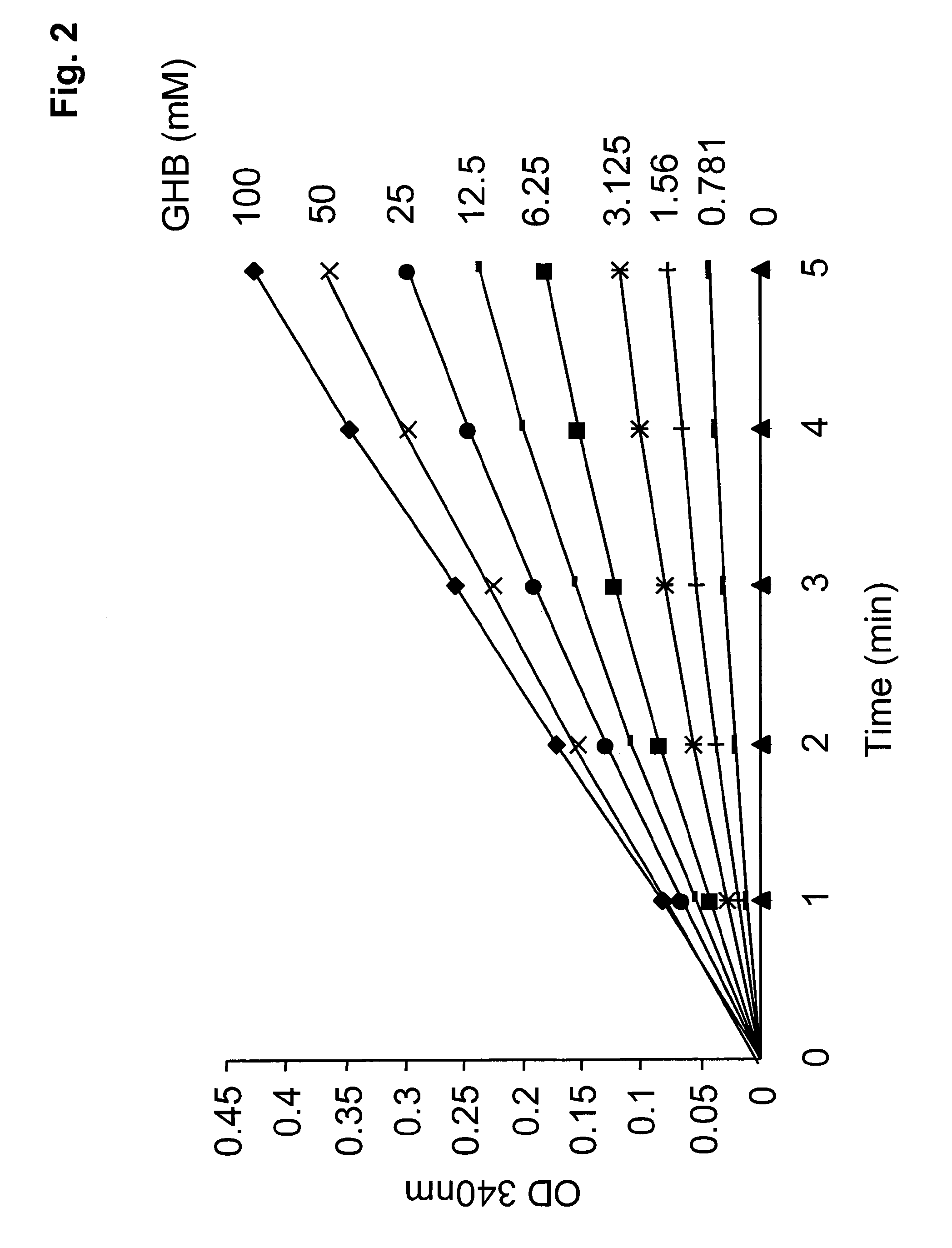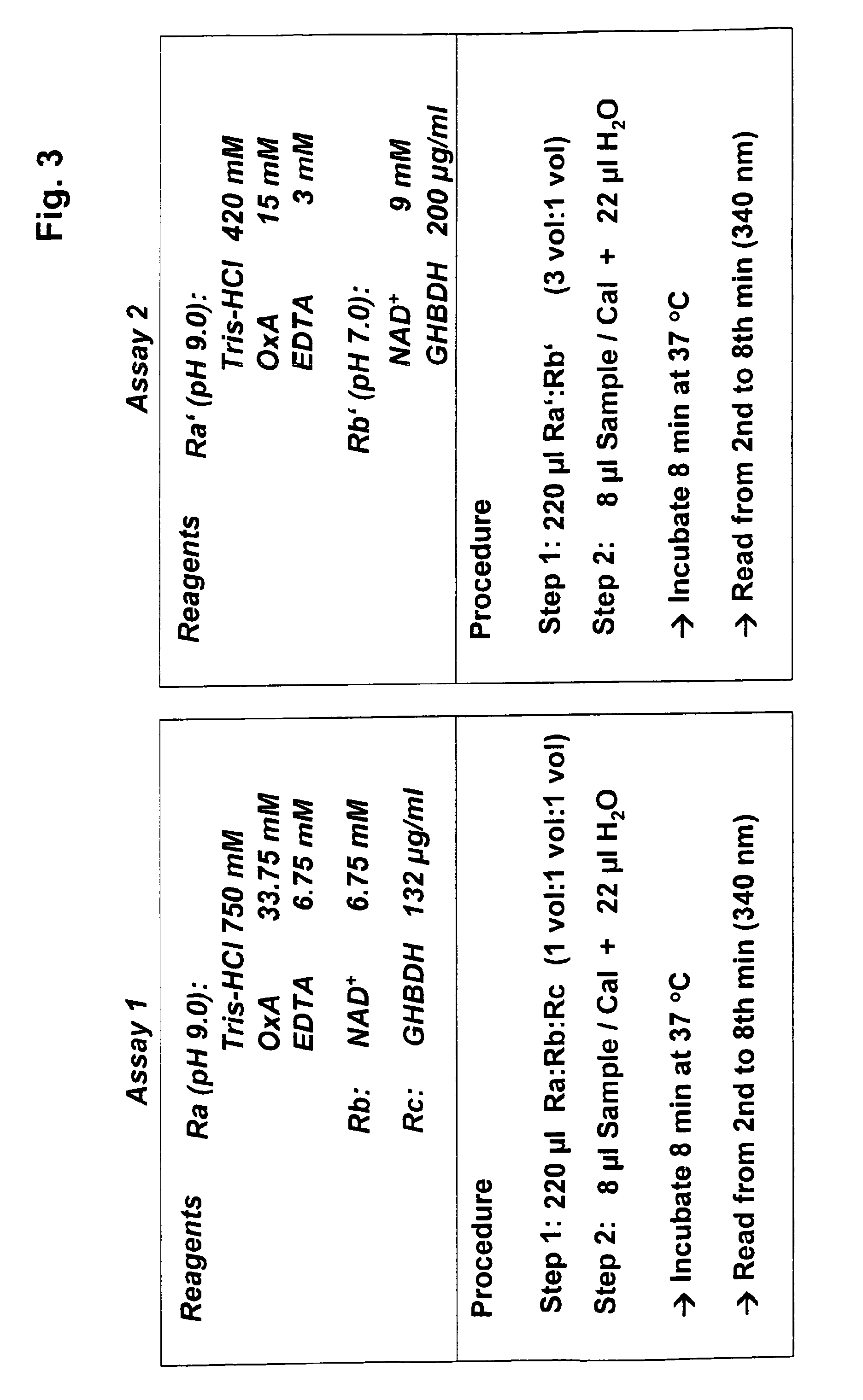Methods for determining the concentration of gamma-hydroxy butyric acid (GHB) in a sample
a technology of gamma-hydroxy butyric acid and concentration, which is applied in the direction of biological testing, material testing goods, biochemistry apparatus and processes, etc., can solve the problems of affecting the quality of life, and causing death, so as to achieve easy conductibility
- Summary
- Abstract
- Description
- Claims
- Application Information
AI Technical Summary
Benefits of technology
Problems solved by technology
Method used
Image
Examples
Embodiment Construction
[0031]The present invention therefore provides a method to determine the concentration of gamma-hydroxy butyric acid (GHB) in a sample, whereas the method comprises the steps of:[0032]a) incubation of the sample and an enzyme capable of converting GHB to succinic semialdehyde (SSA) and reducing an oxidized cofactor,[0033]b) measuring the quantity of the reduced cofactor and[0034]c) correlating the measured quantity of the reduced cofactor with the concentration of GHB in the sample.
[0035]The present invention further provides a composition for assaying a sample for GHB, comprising the following components:
a) an enzyme capable of converting GHB to succinic semialdehyde (SSA), and
b) an oxidized cofactor.
[0036]Moreover, the present invention provides a kit, suitable for carrying out the method of the present invention.
[0037]The invention also relates to the use of the method of the present invention for application to a microtiter plate or an autoanalyzer (random access analysis, often...
PUM
| Property | Measurement | Unit |
|---|---|---|
| wavelength | aaaaa | aaaaa |
| wavelength | aaaaa | aaaaa |
| wavelength | aaaaa | aaaaa |
Abstract
Description
Claims
Application Information
 Login to View More
Login to View More - R&D
- Intellectual Property
- Life Sciences
- Materials
- Tech Scout
- Unparalleled Data Quality
- Higher Quality Content
- 60% Fewer Hallucinations
Browse by: Latest US Patents, China's latest patents, Technical Efficacy Thesaurus, Application Domain, Technology Topic, Popular Technical Reports.
© 2025 PatSnap. All rights reserved.Legal|Privacy policy|Modern Slavery Act Transparency Statement|Sitemap|About US| Contact US: help@patsnap.com



